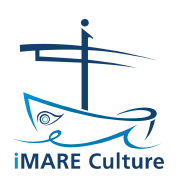EVOCATION
EVOCATION will provide the first European training platform for the development of doctoral research skills in the context of scalable acquisition of object shape and material appearance, interactive visualization, advanced 3D displays and computational fabrication. The table to the right summarizes the recruitment deliverables per beneficiary. ESR positions will be advertised at start, with ESRs expected to be working by M6. Training will be based on the novel and scaffolding combination of top-down structured training (e.g., lectures, seminars, progress reports), bottom-up fellow-organized learning (e.g., online discussion and wiki forums, self-auditing, individual coaching) and experiential learning (e.g., experiment design, real-world case studies, workshop organization).
We pursue five major training objectives:
- Training-through-research and methodical learning based on specific research activities
- Local training, combining structured PhD programs with individual coaching, in core research competences and skills within both academic and industrial environments
- Network-wide training, implemented through training events as well as remote tutoring, focusing on the thematic areas, as well as complementary skills focusing on Open science concepts, entrepreneurship, and further transferable skills
- Inter-sectorial and transnational mobility via secondments and shorter visits to beneficiaries and partners
- Individualized development of professional and personal skills through per-person planning, monitoring, and feedback.
The common goal of the specific research activities and of the associated training is to prepare ESR fellows to optimally use and develop technology for high-quality 3D acquisition, and virtual and physical presentation, to be applied in a number of application domains. This is a twofold transformative process involving structured training to reach domain understanding from technical knowledge, and individual coaching to gain awareness from the mastery of technical skills.
i-MareCulture
Project’s i-MareCulture scope is to raise public awareness of European identity by focusing in maritime cultural heritage, which by default bridges different civilizations. In particular, i-MareCulture aims in bringing inherently unreachable underwater cultural heritage within digital reach of the wide public by implementing virtual visits, serious games with immersive technologies and underwater augmented reality. Scope of the project is to design, analyze, develop and validate pioneer applications and systems in the context of Virtual Museums through collaborative and innovative research from a diverse group of scientists, researchers, archaeologists, experts and museums.
The project i-MareCulture is unique, innovative and promising, contributing fully to the H2020 Framework and the Digital Agenda for Europe, a H2020 initiative, for New Skills and Jobs. In addition, this project abides by the EU’s strategy to become a smart, sustainable and inclusive economy by implementing the knowledge triangle by connecting the Education, Research and Industry by supporting and boosting innovative enterprise to develop their technological breakthroughs into viable products in the area of Virtual Museums and Digital Heritage, with real commercial potential.
ETN-FPI
Physics and optics look at light as either wave or ray phenomenon and study its propagation and diffraction effects therein.
Computer graphics deals with properties of materials, lighting conditions and corresponding ray rendering.
Computer vision studies object recognition, scene analysis and interpretation.
Visual neuroscience studies how these tasks are achieved by the human visual system and builds computational models to describe and quantify how our vision works.
AB: Academic Beneficiary
NAB: Non-Academic Beneficiary
PO: Partner Organization
OptIntegral
OptIntegral project has been launched to develop advanced LED advertising displays using in-mould hybrid integration of TOLAE (Thin, Organic and Large Area Electronics) and photonics components.
The project will combine the intrinsic TOLAE benefits of thin lightweight bendable structures and in-mould integration with automated high reproducibility assembly, to produce a revolutionary optical design concept that brings better display resolution, lower costs and energy saving.
The aim of OptIntegral is to prove the viability of the technology, and demonstrate the flexibility, sustainability, and cost effectiveness of this revolutionary manufacturing process. This should enable a wide range of diverse LED display products to be manufactured competitively within the EU labour market.
Qoe-Net
The project addresses the needs for models, methodologies and tools for an effective management of the QoE along the whole chain of design, production, delivery and control of multimedia services. Particular attention will be devoted to three applications: mobile gaming, social TV, and web-services.
This figure shows the interaction between the QoE-Net research areas and the eco-system of factors in multimedia service provisioning, where the quality of experience should be strongly considered:
- Content and context-aware coding: it refers to the coding procedures for optimised QoE at the server side, to be aware of the content to be compressed and protected from errors and the context where the content will be consumed.
- Context and network-aware delivery: it refers to the media delivery or transmission mechanisms which are able to optimise QoE from network side.
- Content and context-aware decoding/displaying: it refers to decoding procedures and displaying techniques for optimised QoE at user terminal side.
- QoE monitoring, control and management: it refers to the activities of monitoring, control and management which should be conducted in each of the three blocks described above.
- QoE definition, modelling and evaluation: it refers to the definition/features and modelling of QoE, and evaluation of QoE models based on user subjective tests.
As shown in the figure, in addition to the above key technical aspects addressed along the media delivery chain, non-technical aspects which will have a strong impact on QoE will also be investigated. These include: the environmental impact or the context awareness on QoE; the psychological/social impact on user perception and consequently on QoE; the business impact (e.g. cost or financial aspects) on QoE; the impact of different services on QoE; the aesthetics/art and design impact; the display/rendering of multimedia contents and their impact on QoE. As highlighted, all these procedures in this project will be guided by the three key applications.
Every factor is strictly linked to each other and the management of the QoE needs a complete understanding of all issues involved. For this reason the ESRs involved in the network will study the whole QoE eco-system together with an in-depth investigation of the issues covering one or more specific factor(s).



